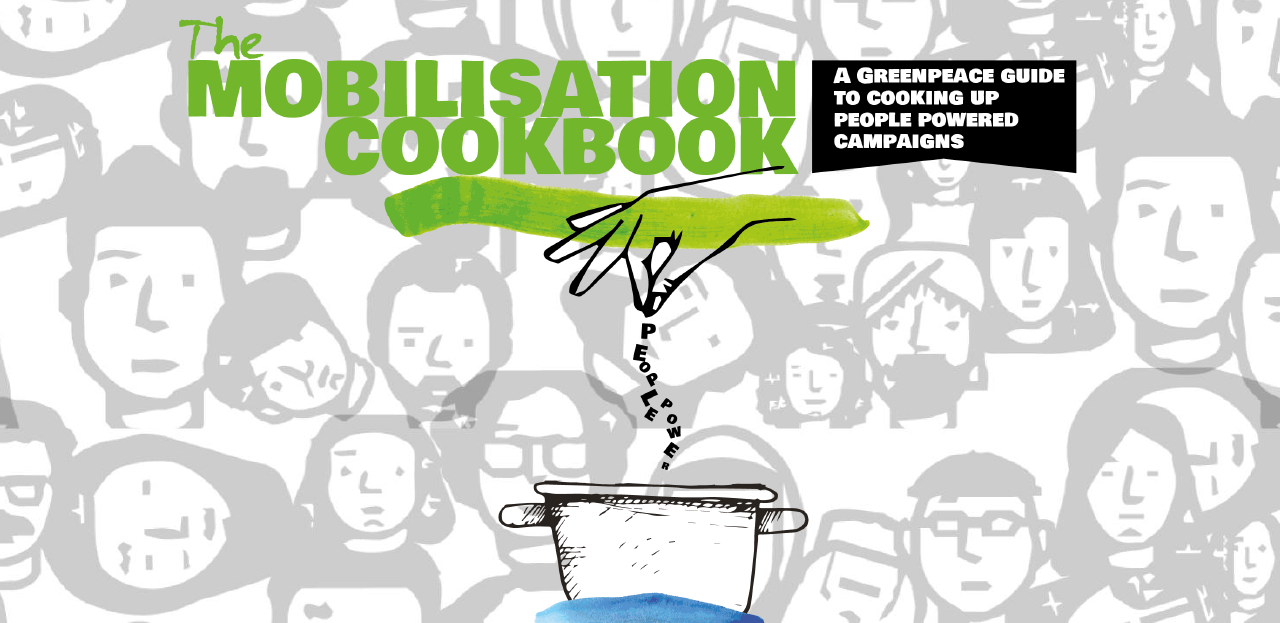People-powered movements are transforming the world—and our work. Today, nearly everyone has tools for change in the palm of their hand, which is reshaping how organisations like Greenpeace think and operate.
Amidst rapid change, we’ve often found ourselves talking about mobilisation and people power without a shared sense or language for what we mean.
Why do words like “engagement” ring through our offices as often as smartphones? What is “people power,” anyway? Most importantly, why should any of this matter to you and the people you work with?
The Mobilisation Cookbook is a guide to answer (almost) everything you wanted to know about “people-powered” campaigns but were afraid to ask.
The Cookbook was initially developed for Greenpeace staff, volunteers, and allies in 2016 (while the MobLab was still based at Greenpeace; see “Our Roots“), but we’ve made it publicly available because we know elements of this guide can help anyone to cook up effective people powered campaigns.
It was authored in 2016 by MobLab’s Emily Hunter in partnership with the International Volunteering Lab, the Global Engagement Department at Greenpeace International, and many change agents at Greenpeace and beyond who advised along the way.
In this guidebook, you’ll find:
- Six “key ingredients” of people-powered campaigns
- “Recipes” and case studies of people-powered Greenpeace campaigns
- Five approaches Greenpeace teams and offices are using to become more engagement-centric
- The Engagement Pyramid – a tool for providing a full spectrum of roles for people
- Eight examples of volunteering at Greenpeace that reflect the diverse talents and skillsets of 25,000+ change agents around the world
- Open campaign strategies and tactics for attracting new people, building and sharing power, and creating stronger, long-lasting campaigns
